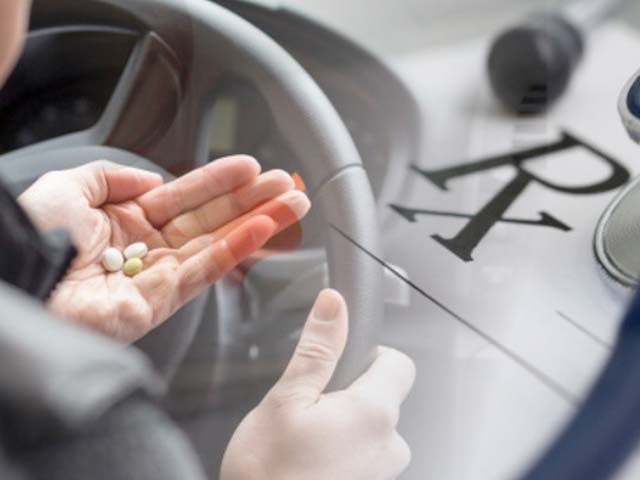How the Evolution of eCommerce Has Given Way to a Ship-ageddon
It’s official, as consumers we are spoiled. We expect to be able to shop online with lightning speed—for what we want to be available precisely when we want it, and for it to be delivered to our door immediately—if not sooner.
Now as the nation braces for another potential wave of Covid-19, the growing reliance on e-commerce is placing unprecedented demands on shipping and last-mile delivery services. With online buying at an all-time high and the holiday shopping season just around the corner, this massive acceleration in demand is expected to reach record levels in the coming months, and all eyes are now on the nation’s fleets to keep things moving.
Click, Click, BOOM! The Evolution of Ecommerce
To understand what’s happening in today’s world of delivery, it’s useful to assess how ecommerce has evolved since its inception.
1969-1999 – The Time of ACCESS
While the first ecommerce company was technically founded in 1969, it was the introduction of websites like Amazon and Ebay in 1995 and the introduction of PayPal just a year later that gave people an exciting new way to ACCESS the retail world with just a few simple keyboard clicks. Every major brand adopted a website and rushed to begin selling their goods online. The doors of consumer behavior were thrown wide open, and thus the online shopping boom began.
2000-2019 – The Road to AVAILABILITY
Throughout the early 2000’s, the movement to online retail shot up again as aggregators expanded AVAILABILITY of goods. By offering multiple brands all in one place, consumers had more choices while shopping with companies they trusted, turning companies like Amazon, Zappos, Target, and Walmart into household names and creating a dependency on online retail.
2020 & Beyond – The Age of SPEED
Today, ecommerce has expanded to be inclusive of small business and big business alike. There’s seemingly nothing you can’t find on the internet, so it’s not so much about what you can buy or where you can buy it, but how fast you can get it. Consumers now report DELIVERY TIME as the deciding factor in their buying decision, creating a fierce new competition among retailers to optimize their logistics and promise faster delivery. As of January 2020, there are a reported 150 million people on Amazon Prime memberships with 2-day delivery, prompting companies like Walmart and Bed Bath and Beyond to launch similar services to remain competitive in the need for speed.
In terms of the age of speed, I’d like to personalize this with an example that happened recently. I was going away on a local trip with my family and a few of our kids’ friends. Just a few days before the trip, I learned that I was put on “cooler” duty, and had to find a Yeti quickly. I searched around on sites and quickly steered away from any site that didn’t promise the delivery time I needed. Where did I finally buy my Yeti? Dick’s Sporting Goods. They could promise the delivery time I needed, and while it’s possible that I paid a few more dollars for the cooler, I got it when we needed it. It’s now about delivery times—SPEED.
It’s All About B2ME
Retailers learned at the onset of the of the eCommerce boom, that delivery of their goods was as important as the sale itself. Today, delivery isn’t just part of the sales process, it’s at the heart of it, with businesses now being created entirely around ‘B2Me’. This change in consumer preferences is perhaps most notable in the service industry, as many services are now being made available for on-demand delivery as well- think mobile veterinarians, mobile auto mechanics, even mobile dentists. With 30% more purchases being made online now compared to just 10.7% only a year ago, experts predict that the B2Me trend will continue as more and more services develop a mobile component.
Ship-aggedon is Here
As COVID crisis-buying continues and the holiday shopping season begins, fleets are facing a new period of intensely high demand nicknamed “Ship-aggedon” by industry experts. As the nation’s fastest growing fleet company, Merchants Fleet is advising fleets to shift their operational priorities now to survive the onslaught:
-
Driver Shortages
Pre-pandemic, the fleet industry was already experiencing a driver shortage which was expected to escalate to a need for 1.1 million drivers over the next decade. Now more than ever, it’s important to find good drivers and motivate them to stay with added benefits like health and wellness perks, and additional PTO whenever possible.
-
Don’t Wait — Optimize Your Operations NOW
It is critical that retailers and fleets take time now to review their assets and be ready to scale up quickly when the floodgates open. If you’re not currently using fleet data, now is the time to implement it. This valuable data is a game changer, as it allows you to identify usage patterns so you can manage fuel costs, plan ahead for regular maintenance, monitor driver efficiency and identify opportunities for reducing downtime. If your fleet is managed by a fleet management company, Merchants suggest that you work with them closely to help you fleet-up when the time comes.
-
Think Outside the Box Truck
As available vehicle options become tighter during crunch time, Merchants encourages fleets to rethink the vehicles they’re relying on to make deliveries. While box trucks will be needed for large parcel deliveries, consider supplementing your resources with vans, SUVs and even sedans to make small drops. Utilizing smaller vehicles whenever possible will help ensure availability of the large vehicles when you really need them, while also eliminating the need to hire as many drivers with commercial licenses or training. With Merchants you also have a broad variety of branding options to help easily integrate any vehicle into your branded fleet.
The Road Ahead
With no slow down in sight, the fleet industry continues to drive forward with some exciting technological innovations that will change the face of delivery as we know it in the very near future:
-
Electric Vehicles (EVs)
Significant reductions in battery costs are bringing the price of EVs down, with Carnegie Mellon University forecasting that some EVs will reach the same sticker price as their internal combustion engine equivalents by 2025. This presents huge total cost of ownership (TCO) savings for fleets, as EVs have much lower maintenance costs and get 10 more miles for the same price per gallon of gasoline.
-
Moving from Traditional Telematics to Connected Vehicles (CVs)
Think of traditional telematics as the old Tom Tom you would plug into your car’s cigarette lighter for help with directions. Like the slick new navigation systems built into most vehicles today, connected vehicle (CV) technology is built into fleet vehicles right from the factory. This new technology provides detailed vehicle analytics which allows drivers to exchange real-time information for optimizing delivery routes and operational efficiency.
While all ‘last-mile’ delivery suppliers are facing enormous pressure to pivot during this impending “Shipp-ageddon”, those who take the time to be ready now will reap the most long-term reward. In the words of Henry Ford “Before everything else, getting ready is the secret of success.”





